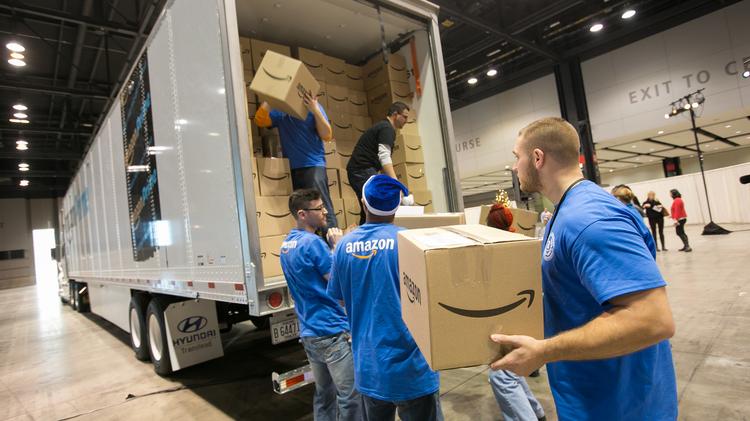How Modcloth deal brings Wal-Mart, Amazon into close proximity in Pittsburgh
Jet.com’s announced deal to buy ModCloth sets up the ultimate in odd bedfellows at one of the region’s largest industrial buildings.
The deal by Jet.com, announced on Friday, brings Modcloth, an online independent fashion merchant, into the fold of a major e-commerce startup that was bought by Wal-Mart for $3.3 billion only a little more than six months ago.
With reports that ModCloth CEO Matt Kaness told staff that Jet.com wants to compete with Amazon.com, it’s hard not to wonder about the implications for ModCloth’s 250,000-square-foot distribution center here.
After all, ModCloth, which is based in San Francisco but was founded in Pittsburgh, operates in the same 540,000-square-foot building as Amazon.com, which followed the e-commerce clothing company into the building in 2014, setting up one of its sortation centers in a space of more than 200,000 square feet.
Now, 2250 Roswell Drive, whose history began as a department store warehouse and was later used by Roomful Express, will be hosting Amazon, with a market capitalization greater than $400 billion, side-by-side with a subsidiary of Wal-Mart, the world's largest retailer with a market capitalization of about $217 billion.
ModCloth and Wal-Mart confirmed the deal late Friday but didn't respond to inquiries on their status at 2250 Roswell along with Amazon. Amazon did not respond for comment.
Marc Wulfraat, principal of MWPVL International Inc., has developed a specialty in closely tracking the distribution facilities of these major players, assembling research reports detailing just where their warehouses are by size and location.
When asked how often Amazon and Wal-Mart and their subsidiaries have operated out of the same building, Wulfraat said there are no other examples to his knowledge.
He doesn’t expect such an arrangement to last.
“Amazon and Wal-Mart are not exactly on chummy terms with one another, so any arrangement that results in both companies having subsidiary operations within the same physical building, such as a multitenant third-party-logistics distribution operation, would likely be short-lived,” he said in an email.
Wulfraat makes such speculation based on the history involved between Wal-Mart, the biggest retailer working to adapt to growing e-commerce trends, and Amazon, the dominant e-commerce player.
That history includes Jet.com CEO and new Wal-Mart Chief Executive of E-commerce Marc Lore, who founded Jet.com a few years ago after his previous company, Quidsi, was subject to a bidding war between Wal-Mart and Amazon, as well as Walgreens, which dropped out. Amazon was the eventual buyer of Quidsi, which operated the popular diapers.com ecommerce venture, helping Lore to seed Jet.com, which sells a broad variety of product lines and operates under a dynamic pricing strategy that enables customers to reduce their bill as they buy more product.
While it remains to be determined if both companies will operate side by side at 2250 Roswell Drive, Lou Oliva, executive managing director of the Pittsburgh office of Newmark Grubb Knight Frank, sees no reason why they can’t.
He added they both operated out of different sides of the same building, each with their own docking bays, and said he sees no reason they couldn’t continue to coexist there.
Oliva did add that a Wal-Mart subsidiary and Amazon ending up in the same building was less a coincidence than an inevitability of the Pittsburgh market’s limited options for distribution space.
“Amazon ended up in that building because it was the last man standing,” said Oliva, recalling Amazon's search a few years ago. “There was no other spaces available of that size."
He added of Wal-Mart and Amazon: “How they both arrived at this location (shows) how tight the market was and remains.”

No comments:
Post a Comment